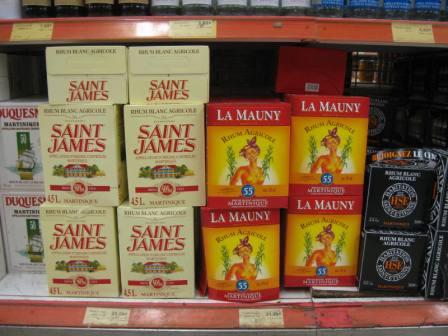2. It’s actually rhum agricole–a different product from the usual Caribbean rums we imbibe. The difference? Instead of being distilled from a fermented brew of molasses (a by-product of sugar production) it is distilled directly from fermented cane juice. Unless it’s aged (old = vieux), it’s a white rhum. Aged rums pick up golden hues from the barrels.
3. It’s available in boxes, just like cheap wine! Only it’s all the best rhum. Although cheap rum does come in a box as a supermarket generic.
4. What’s the best? Some local brands of renown include Clement, Trois Rivières, La Mauny, and Depaz.
5. The traditional local drink is “ti punch,” a formidable blend of rhum, a little local coarse sugar, and a miniscule whisper of lime juice. Order it at a bar or restaurant and you’ll typically receive a glass, a sugar bowl, a wedge of lime the size of your thumbnail, and a large bottle of rhum agricole. DIY! And please, don’t expect any ice.
6. Yes, it’s wicked strong at first, but you’ll be surprised at the smooth underbelly it displays after a few sips.
7. Variations on ti punch? Supermarkets offer various flavored syrups to substitute for the sugar: vanilla, ginger and sirop batterie, which is much like molasses.
8. The “ti” of ti punch comes from the French word petit, meaning small.





